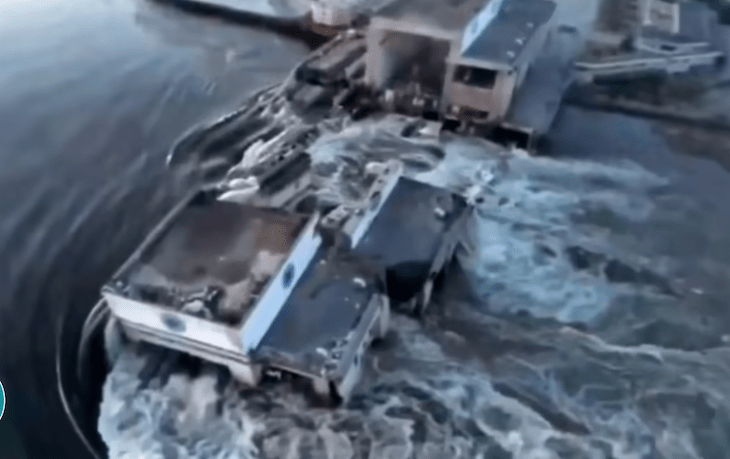Hours after the Ukrainian army finally launched its long-awaited counter-offensive, the Nova Kakhovka dam has been blown up – which Zelensky blamed on ‘Russian terrorists’. It belongs to the fifth largest hydroelectric plant in Ukraine, in the occupied part of the Kherson region, which was completely destroyed in the explosion. The flooding has been immediate: more than 80 settlements are in danger (with 16,000 people at risk) including Kherson itself. Kyiv has started the evacuation of the villages and towns located downstream of the Dnipro river. Whether Moscow will do the same for the people it now claims as Russian citizens remains to be seen.
As expected, Russia has denied responsibility. Mykhailo Podoliak, Zelensky’s advisor, said the dam was blown up by the Russian army’s 205th Separate Cossack Motor Rifle Brigade. A week before the dam was blown up, the Kremlin lifted the obligation to investigate accidents at dangerous facilities and hydrotechnical structures that occurred as a result of ‘military operations’ and terrorist attacks. The decision was also applied to the occupied territories that Russia considers its own.
The hydroelectric plant has been occupied since the second day of the full-scale Russian invasion, with Ukrainian intelligence warning about the potential for Russia to destroy the dam since October. They said Russian forces brought two military trucks fully loaded with explosives and installed mines on the dam. Back then, Zelensky called on the members of the European Council to send an international observation mission to the hydroelectric plant. But this did not happen.
The Nova Kakhovka dam was used to provide water to the arid south of Ukraine and cool the reactors of the Zaporizhzhya nuclear power plant, which is currently under Russian control. For now, the cooling pond is full – enough for the station’s needs – but how long it will last is unknown. Russian mine barriers are now underwater, with mines flowing through the stream. The destruction of this dam also means the loss of vital irrigation for a large part of Ukraine, which will cause devastation to Ukrainian agriculture in the long term (Ukraine is in the top-five grain suppliers in the world).
The flooding will also delay the Ukrainian army from fording the river and crossing to the left bank. But destroying the dam comes at a cost to Russia: it will now be impossible to operate the North Crimean canal, which piped water to occupied Crimea. The water level in the Kakhovsky reservoir is dropping rapidly, at a rate of about 15 cm per hour. So, very soon, Crimea – as well as settlements upstream of the Dnipro river – will face serious water supply issues. This includes the Zaporizhia region, which Russian forces have so far failed to seize.
The widening of the river, brought about by the flooding, will also create greater distance between the firing positions of the Russian military and their targets. This will make it harder for Putin's soldiers to terrorise those who live in land under Ukraine’s control. One Kyiv official said, ‘Nothing and no one, not a single Russian, will stop the liberation of Ukraine whose time has come’.
The United Nations tweeted this morning ‘Tuesday is Russian Language Day’ but did not mention the blown dam. Ukraine plans to initiate a meeting of the UN Security Council to hold Russia accountable. This has become a strange facet of this war: Russia denying responsibility when the Kremlin's authorship is pretty clear to the outside world. We'll bring you more details as they emerge.







Comments